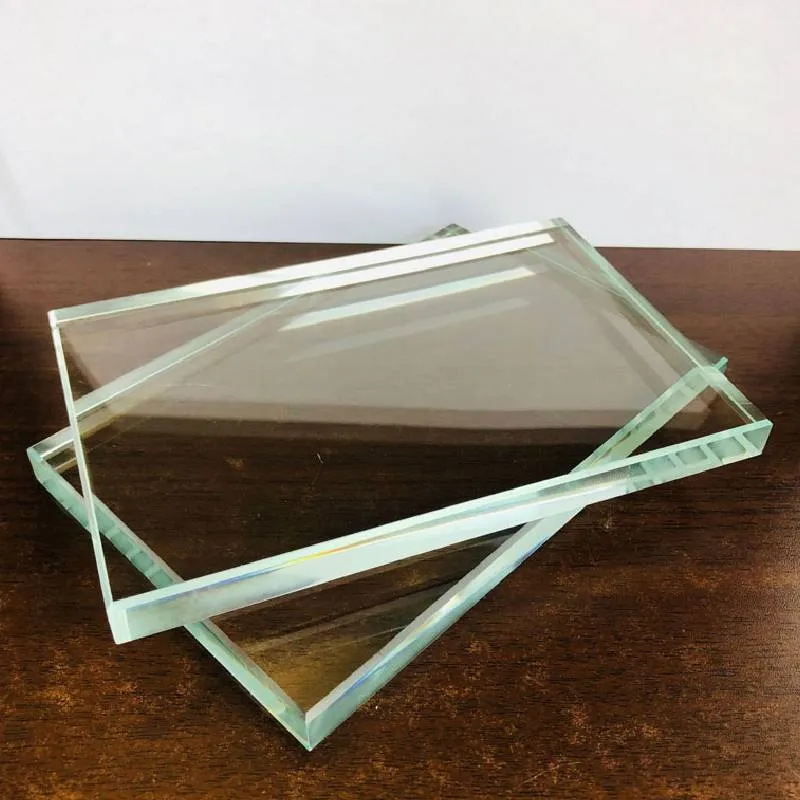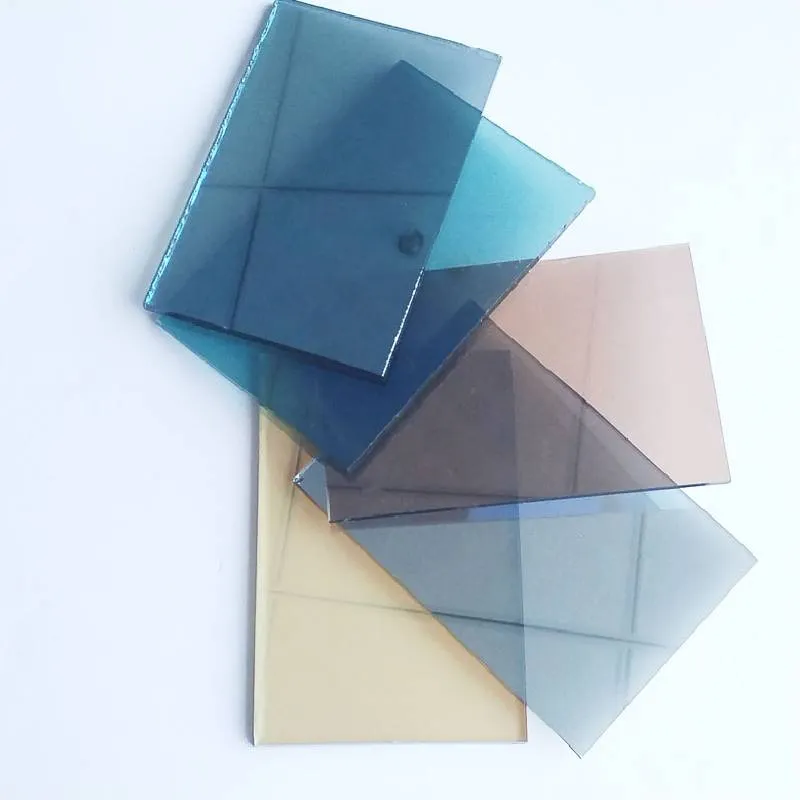- Fundamental definitions and creation processes of specialized glass types
- Surface characteristics and light diffusion properties compared
- Manufacturing techniques for safety glass versus conventional glass
- Technical performance analysis with comparative data metrics
- Leading manufacturer capabilities and industry benchmarks
- Custom design possibilities for functional applications
- Practical implementation scenarios across different industries

(what is the difference between etched and frosted glass)
Understanding Core Variations in Specialty Glass Production
Distinct production methods create significant differences between glass types despite some visual similarities. Etched glass undergoes either chemical or mechanical abrasion that physically alters its surface texture. Skilled artisans often incorporate custom designs during the engraving process which becomes permanent. Frosted glass typically uses sandblasting or acid treatments to create a uniform matte finish that scatters light. Both techniques yield translucent results but through fundamentally different material modifications.
Light Transmission and Surface Texturing Properties
The interaction between light and glass surfaces reveals critical functional differences. Etched patterns can create varying levels of translucency depending on depth - shallow engravings might permit 70-80% light transmission while deeper cuts reduce visibility to 40-50%. This technique allows controlled transparency across different pattern zones. Frosted glass scatters light uniformly due to micro-abrasions across the entire surface, typically permitting 50-60% light diffusion regardless of viewing angle.
Surface integrity differs substantially: Etching physically removes glass material creating grooves and depressions clearly detectable by touch. Frosting creates microscopic surface disruptions that feel smooth yet significantly reduce transparency. This surface-level frosting differentiates it from etched applications where design depth dictates both tactile and visual qualities.
Safety Glass Manufacturing Processes Explained
Tempered glass undergoes extreme thermal processing to enhance structural properties. This manufacturing process involves heating glass panels to approximately 650°C followed by rapid cooling that creates balanced internal tension patterns. Regular float glass (annealed glass) cools slowly at room temperature without additional treatment. The tempering process increases durability by 4-5 times compared to untreated glass.
When broken, the safety characteristics become critically apparent: Tempered glass fractures into small pebble-like pieces without sharp edges, meeting international safety standards including ANSI Z97.1 and European EN12150. Regular glass shatters into dangerous shards and jagged fragments that pose severe injury risks. This fundamental safety difference necessitates tempered glass applications in buildings, vehicles and commercial environments where impact resistance remains paramount.
Technical Performance Metrics Analysis
| Characteristic |
Etched Glass |
Frosted Glass |
Tempered Glass |
Regular Glass |
| Impact Resistance |
Similar to substrate material |
Similar to substrate material |
4-5x stronger |
Baseline strength |
| Thermal Shock Threshold |
≈180°F |
≈180°F |
≈450°F |
≈180°F |
| Surface Hardness (Mohs) |
5.5-6.5 |
5.5-6.5 |
5-6 |
5-6 |
| Break Pattern |
Based on substrate |
Based on substrate |
1cm² fragments |
Dangerous shards |
| Cost Premium |
20-40% |
15-30% |
25-60% |
Standard cost |
Manufacturer Technologies and Material Capabilities
Leading producers like Corning and Guardian have developed specialized etching systems capable of precision tolerances under 0.1mm. Industrial frosting techniques from manufacturers such as Pilkington feature proprietary acid formulas applied uniformly across large panels exceeding 10m² surface areas. Saint-Gobain's tempering ovens process automotive glass at rates exceeding 2,500 panels daily with consistent hardness measurements between 550-650 N on the Knoop hardness scale.
Quality benchmarks dictate that tempered glass must withstand compression levels exceeding 10,000 psi - verified through impact tests dropping steel balls weighing 227g from heights of 2m without fracture. These performance thresholds exceed conventional glass capabilities by substantial margins. Thermal shock resistance in tempered glass allows survival through temperature differentials exceeding 270°F without compromising structural stability.
Design Customization and Functional Applications
Etched glass permits nearly limitless customization potential using CNC precision routing that achieves depths from .02mm to 3mm. Architectural applications frequently incorporate corporate logos etched at precise depths maintaining 60% translucency. Frosted surfaces provide enhanced privacy solutions suitable for healthcare partitions where 90% light diffusion balances visibility discretion with ambient illumination.
Safety requirements dictate tempered glass applications in critical settings including balcony barriers (minimum 12mm thickness), glass stair treads (laminated with 1.52mm PVB interlayer) and high-traffic retail partitions. These installations follow building codes mandating minimum surface compression of 10,000 psi. Decorative processes including ceramic frit printing applied before tempering provide lasting solutions for branding applications in corporate environments.
Practical Implementation Across Diverse Industries
Surgical facilities widely implement etched sterilization indicators on autoclave doors where chemical alterations verify sterilization cycles. Pharmaceutical labs utilize acid-frosted containment barriers for chemical fume hoods maintaining uniform light diffusion. Tempered glass shower enclosures remain mandatory in residential construction under modern building codes, typically requiring 6-8mm thickness with fully tempered certification labels permanently etched in corners.
Commercial kitchen environments demonstrate hybrid solutions: Interior partitions employ 8mm frosted glass reducing visual distractions while service counters require 12mm tempered panels withstanding impacts from serving trays. This combination balances safety requirements with functional design considerations. Future innovations include switchable smart glass technologies that electronically transition between transparent and frosted states suitable for conference rooms and advanced privacy implementations.
Selecting Between Etched, Frosted, Tempered and Regular Glass Options
Determining suitable glass applications requires evaluating aesthetic, functional and safety parameters. Decorative projects requiring intricate custom designs benefit from etching techniques. Projects needing uniform diffusion and privacy select acid-frosted alternatives. High-traffic commercial installations demand tempered safety glass compliance with building regulations. Budgetary constraints may permit regular glass only in fixed interior applications without safety concerns.
Durability testing data supports specifying tempered glass wherever impacts, thermal shifts or breakage risks exist. The substantial cost differential between tempered and regular glass becomes justified through life-safety protections and reduced liability exposure. Surface treatments like etching and frosting may be applied to tempered substrates, offering creative possibilities while maintaining structural integrity. This layered functionality approach produces glass solutions meeting technical specifications without aesthetic compromise.

(what is the difference between etched and frosted glass)
FAQS on what is the difference between etched and frosted glass
Q: What is the difference between etched and frosted glass?
A: Etched glass uses acid or sandblasting to create permanent decorative patterns, altering the surface texture. Frosted glass has a uniformly blurred appearance achieved through sandblasting or coatings. Both obscure visibility, but etching allows custom designs while frosted glass offers consistent opacity.
Q: How does tempered glass differ from regular glass?
A: Tempered glass is heat-treated for strength and shatters into small, safe granules when broken. Regular glass (annealed) breaks into sharp shards. Tempered glass is 4-5 times stronger but cannot be cut after tempering.
Q: Is there a difference between tempered and normal glass in durability?
A: Yes, tempered glass undergoes thermal processing to enhance impact resistance and thermal shock tolerance. Normal glass lacks this treatment, making it more prone to cracking. Tempered versions are mandatory for safety-critical applications like car windows.
Q: Can etched glass be used for structural purposes?
A: No, etching only modifies surface appearance and light diffusion, not structural integrity. For load-bearing needs, tempered or laminated glass should be used. Etching works best for decorative partitions or doors where strength isn’t primary.
Q: Why choose tempered glass over standard glass for windows?
A: Tempered glass provides superior safety during breakage and withstands greater wind pressure. Standard glass poses injury risks from sharp fragments. Building codes often require tempered glass in high-traffic or overhead installations like skylights.
 Afrikaans
Afrikaans  Albanian
Albanian  Amharic
Amharic  Arabic
Arabic  Armenian
Armenian  Azerbaijani
Azerbaijani  Basque
Basque  Belarusian
Belarusian  Bengali
Bengali  Bosnian
Bosnian  Bulgarian
Bulgarian  Catalan
Catalan  Cebuano
Cebuano  Corsican
Corsican  Croatian
Croatian  Czech
Czech  Danish
Danish  Dutch
Dutch  English
English  Esperanto
Esperanto  Estonian
Estonian  Finnish
Finnish  French
French  Frisian
Frisian  Galician
Galician  Georgian
Georgian  German
German  Greek
Greek  Gujarati
Gujarati  Haitian Creole
Haitian Creole  hausa
hausa  hawaiian
hawaiian  Hebrew
Hebrew  Hindi
Hindi  Miao
Miao  Hungarian
Hungarian  Icelandic
Icelandic  igbo
igbo  Indonesian
Indonesian  irish
irish  Italian
Italian  Japanese
Japanese  Javanese
Javanese  Kannada
Kannada  kazakh
kazakh  Khmer
Khmer  Rwandese
Rwandese  Korean
Korean  Kurdish
Kurdish  Kyrgyz
Kyrgyz  Lao
Lao  Latin
Latin  Latvian
Latvian  Lithuanian
Lithuanian  Luxembourgish
Luxembourgish  Macedonian
Macedonian  Malgashi
Malgashi  Malay
Malay  Malayalam
Malayalam  Maltese
Maltese  Maori
Maori  Marathi
Marathi  Mongolian
Mongolian  Myanmar
Myanmar  Nepali
Nepali  Norwegian
Norwegian  Norwegian
Norwegian  Occitan
Occitan  Pashto
Pashto  Persian
Persian  Polish
Polish  Portuguese
Portuguese  Punjabi
Punjabi  Romanian
Romanian  Russian
Russian  Samoan
Samoan  Scottish Gaelic
Scottish Gaelic  Serbian
Serbian  Sesotho
Sesotho  Shona
Shona  Sindhi
Sindhi  Sinhala
Sinhala  Slovak
Slovak  Slovenian
Slovenian  Somali
Somali  Spanish
Spanish  Sundanese
Sundanese  Swahili
Swahili  Swedish
Swedish  Tagalog
Tagalog  Tajik
Tajik  Tamil
Tamil  Tatar
Tatar  Telugu
Telugu  Thai
Thai  Turkish
Turkish  Turkmen
Turkmen  Ukrainian
Ukrainian  Urdu
Urdu  Uighur
Uighur  Uzbek
Uzbek  Vietnamese
Vietnamese  Welsh
Welsh  Bantu
Bantu  Yiddish
Yiddish  Yoruba
Yoruba  Zulu
Zulu 


